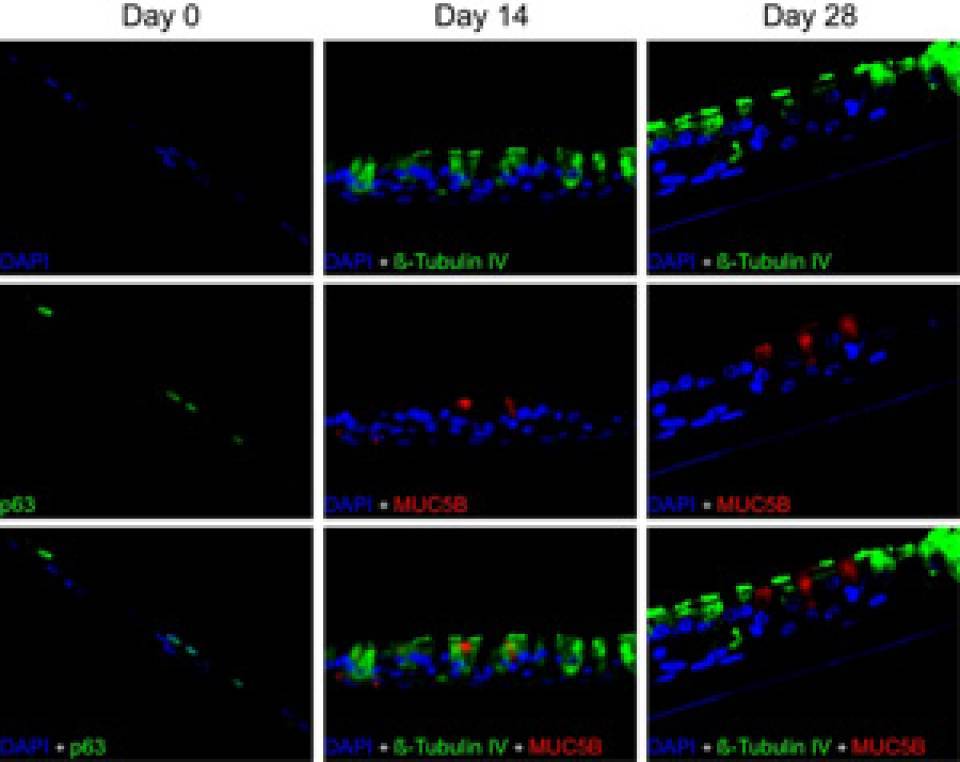The nasal epithelium is the first line of defense against inhaled pollutants, allergens and microbial pathogens and regulates both innate and acquired immunity through the secretion of different substances (cytokines and mediators). The problem comes when its function is impaired because of an inflammatory disease such as rhinitis or rhinosinusitis. Until now, several in vitro models were used for studying the mechanisms of altered epithelium but they did not have the morphological or biochemical characteristics of nasal epithelial cells. Researchers from the IDIBAPS team Clinical and Experimental Respiratory Immunoallergy (IRCE), led by Joaquim Mullol, MD, PhD, have published an article in the journal PLoSOne in which they have developed and characterized two epithelial 3D models: one for human healthy nasal mucosa and another for nasal polyps, which maintains the inflammatory function. The predoctoral researcher Francisco de Borja Callejas is the first author of the work.
To conduct the study, researchers used the ALI (air-liquid interface) technique that consists in the culture of primary cells at the air-liquid interface. So, after getting the epithelial cells from a donor and make them grow in these conditions, 4 weeks later primary cells differentiated into the three cell types that form the respiratory epithelium: the goblet cells producers of the mucous; the ciliated cells, responsible of the clearance of particulate material and pathogens from the airway; and basal cells, that respond to external injury and are responsible for tissue regeneration. Once the cultures were obtained, researchers studied cell differentiation of the epithelial structure, the different cellular phenotypes and the physiological or pathological function of cells to check out if it was altered.
Results have shown the great plasticity of epithelial cells, capable of regenerating a complete tissue without alterations in its functions. This work provides a 3D in vitro model for studying both the origin and the mechanisms of action involved in nasal inflammatory diseases, such as rhinitis, rhinosinusitis and nasal polyposis. This technology will also be useful in the development of new therapeutic strategies for these diseases.
Article Reference:
Reconstituted Human UpperAirwayEpithelium as 3-D In Vitro Modelfor Nasal Polyposis
Francisco de Borja Callejas, Asunción Martínez-Antón, Isam Alobid, Mireya Fuentes, Julio Cortijo, César Picado, Jordi Roca-Ferrer, Joaquim Mullol. Research Article | published 19 Jun 2014 | PLOS ONE10.1371/journal.pone.0100537

